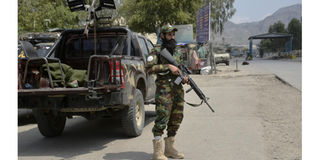Border clashes highlight persistent challenges in Afghanistan-Pakistan relations

Recent border clashes between Afghanistan and Pakistan underscore ongoing tensions and challenges in managing bilateral relations.
The incidents, including violent exchanges along the Durand Line in early 2025, threaten regional stability and raise questions about the approaches both countries are taking to address security and diplomatic concerns.
The most recent clashes in the Nawa Pass area of Afghanistan’s Kunar province resulted in casualties and reflect a pattern of recurring tensions along the border. Reports indicate that there were over 400 cross-border incidents attributed to Pakistan in the past year.
These incidents have been criticized for undermining trust and violating international norms. The situation remains complex, as both sides assert their positions on border security and sovereignty.
A particularly significant event occurred in December 2024, when airstrikes in Paktika province’s Barmal district reportedly led to civilian casualties.
These airstrikes coincided with diplomatic engagements in Kabul, where high-level discussions aimed to foster bilateral cooperation. The timing of these military actions raised concerns about their impact on peace-building efforts and highlighted challenges in aligning diplomatic initiatives with military operations.
Pakistan has cited concerns over threats from the Tehreek-i-Taliban Pakistan (TTP) as a primary reason for its cross-border actions. However, incidents involving civilian casualties, including damage to infrastructure such as mosques, have drawn criticism. Such incidents have prompted calls for a more comprehensive approach to addressing security concerns while protecting civilian lives.
Observers have noted the significant influence of Pakistan’s military establishment in shaping its foreign policy and security decisions. This dynamic has sometimes created tensions between civilian diplomatic efforts and military strategies.
For example, while Pakistan’s Special Representative Mohammad Sadiq pursued dialogue in Kabul, simultaneous military actions in Afghanistan complicated these efforts. The interplay between military and civilian leadership remains a critical factor in shaping Pakistan’s regional policies.
Afghanistan has responded to these incidents by emphasizing the need to safeguard its sovereignty. Statements from Afghan officials, including Minister of Borders and Tribal Affairs Noorullah Noori, have highlighted the civilian impact of recent clashes. Afghanistan’s subsequent actions, including reported retaliatory strikes, reflect its determination to address border violations while seeking to avoid further escalation.
Social media discourse following these incidents has fueled speculation about broader territorial and strategic ambitions. For instance, some online rhetoric has suggested expanding control over the Wakhan Corridor, raising concerns about the potential for further tensions. Such narratives highlight the need for careful management of public messaging to avoid exacerbating an already fragile situation.
The international community has acknowledged the gravity of these events, with organizations such as the United Nations recognizing the impact on civilians. Calls for independent investigations into airstrikes and other incidents have emphasized the importance of accountability and adherence to international humanitarian law.
The broader regional context also presents challenges. Reports from the Pakistan Institute of Peace Studies indicate a rise in domestic security incidents within Pakistan, suggesting internal vulnerabilities that could be contributing to external tensions. Efforts to address these issues, including initiatives by groups like the Pashtun Tahafuz Movement, highlight the need for inclusive and peaceful solutions.
As tensions persist, there is an urgent need for both countries to prioritize diplomatic engagement and constructive dialogue. Building trust will require transparent communication, a commitment to international norms, and coordinated efforts to address shared security challenges. The path to regional stability lies in fostering collaboration rather than allowing conflict to escalate.
The international community’s role in supporting these efforts will be crucial. By encouraging dialogue and providing platforms for conflict resolution, stakeholders can help mitigate tensions and promote lasting peace in the region.
Both Afghanistan and Pakistan have an opportunity to demonstrate leadership by prioritizing the well-being of their citizens and the stability of the broader region.




